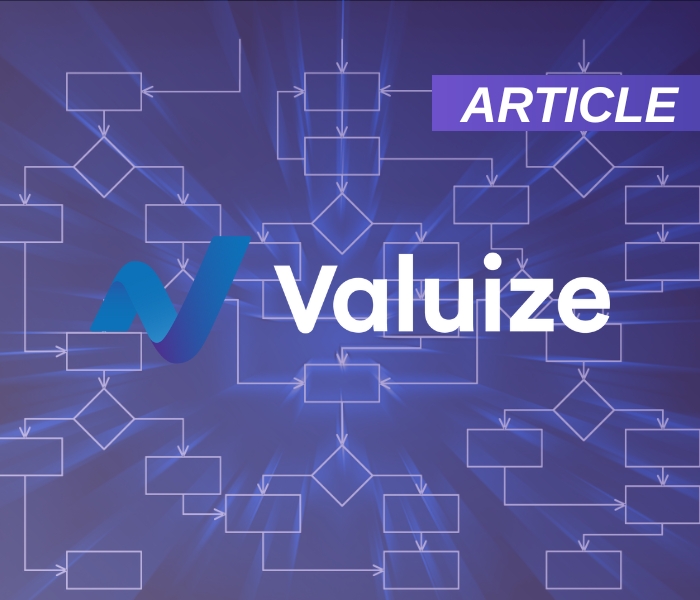A Practical Example: Customer Onboarding Journey Orchestration
To illustrate the concepts of QA and UAT spoken about in [Insert Link to Part 1 Article], let’s use a customer onboarding journey as a consistent example. This journey is designed to automatically guide new customers through the initial stages of product adoption, ensuring they understand key features and achieve early success. The journey includes:
- A series of automated welcome emails triggered at specific intervals after signup.
- Automated tasks assigned to the customer’s CSM to schedule an introductory call.
- Updates to key customer lifecycle stage fields in the CSP based on journey progress.
- Conditional logic to provide different onboarding paths based on customer segment or plan.
- Automated alerts for CSMs if a customer is not progressing through the journey as expected.
This example will be referenced in the following sections to demonstrate how QA and UAT are applied in a real-world scenario.
How to Perform Quality Assurance (QA): A Step-By-Step Approach
- Start With a QA Plan
Every implementation or feature release should include a QA plan that outlines:
- What will be tested. (e.g., the entire customer onboarding journey)
- Who is responsible for QA. (e.g., a dedicated CS Ops resource)
- What tools will be used to track issues. (e.g., Jira)
- Timelines for QA completion.
- Develop a QA Checklist
Standardize your QA process with a checklist tailored to your CRM or CSP. Here’s an example of QA elements often validated, with specific considerations for our customer onboarding journey:
- Workflow validation: Test the entire onboarding journey end-to-end, ensuring all triggers, steps, and conditions are met in the correct sequence. This includes validating the logic the journey is supposed to follow in the CSP against the requirements and acceptance criteria captured against the asset.
- Field configuration checks: Validate that all relevant customer data fields used in the onboarding journey are correctly configured and updated at each stage.
- Automation testing: Trigger all automations within the onboarding journey (e.g., welcome emails, task assignments, progress updates) to ensure they execute correctly.
- Integration validation: Confirm that data flows correctly between the CSP and any other integrated systems involved in the onboarding journey (e.g., marketing automation platform for initial welcome email). The data being used to pull participants into the journey should also be validated as being correct.
- Role-based permissions: Verify that only authorized users can access and manage the onboarding journey configurations and participant data.
- Email content review: Every email in the onboarding journey should be reviewed for any typos or other defects in the formatting or content.
- Filtering and participant management: Test any filtering rules or automated processes for adding or removing participants from the onboarding journey to ensure they function as expected.
- Overall journey step validation: Every single step of the onboarding journey should be tested and validated.
Note: This list is provided as an example. For smaller teams, it’s perfectly appropriate to use a leaner list or approach—as long as your process is standardized and repeatable. The key is consistency and clarity around what’s being tested and how.
- Use a Sandbox or Staging Environment
Always conduct QA in a sandbox that mirrors your production environment. This minimizes risk and allows for safe testing of large-scale changes, such as the entire customer onboarding journey. For example, when building our customer onboarding journey, QA ensures the automated email triggers work correctly and the customer data is updated accurately in the CSP. - Assign a QA Resource Per Build
Assign a QA resource for each feature, story, or piece of the build. This person does not need to QA everything in your organization but is responsible for testing and validating that specific change. For our onboarding journey, a designated CS Ops team member would be responsible for its thorough QA. It’s crucial to document who performed the QA and confirmed the quality—this adds transparency and accountability to your process. - Log and Track Issues
Use project management tools (e.g., Jira, Asana) to log issues, assign ownership, and track resolution. Categorize by severity and impact to prioritize fixes identified during the QA of the customer onboarding journey. The technical team should be able to shorten the time period/waiting periods of the journey to make testing fit the timeframe of the build process. This testing should be done by running staged test users (made up of technical resources) through the entire journey.
How to Execute User Acceptance Testing (UAT): A Practical Framework
User Acceptance Testing (UAT) is the critical phase where we validate that the customer onboarding journey, and indeed any implemented feature, works effectively for its intended users. It’s not about technical correctness (that’s QA’s domain), but about ensuring the solution meets the business needs and provides a positive, functional experience for those who will be using it daily or, in the case of a journey, those who will be experiencing it as customers.
- Select a Diverse UAT Group of Non-Technical Resources
For UAT, it’s crucial to select a group of individuals who represent the key non-technical roles that will interact with or be impacted by the customer onboarding journey. This ensures a comprehensive evaluation from different perspectives. Consider including:
- Customer Success Manager (CSM): CSMs are on the front lines, directly interacting with customers. Their perspective is vital to ensure the journey facilitates their work, provides the right information to customers, and ultimately leads to customer success.
- Practical Example: A CSM tester would evaluate if the automated tasks assigned to them are clear and timely, if the communication triggered by the journey aligns with their customer interactions, and if they have sufficient visibility into a customer’s progress through the onboarding process within the CSP to proactively intervene if needed. They would also assess if the journey helps build a strong initial relationship with the customer.
- Customer Success Manager (CSM): CSMs are on the front lines, directly interacting with customers. Their perspective is vital to ensure the journey facilitates their work, provides the right information to customers, and ultimately leads to customer success.
- Customer Success Operations Team Member: This role often focuses on the efficiency and effectiveness of CS processes and tools. Their involvement in UAT ensures the journey is scalable, aligns with operational best practices, and doesn’t create unnecessary administrative burden for the CS team.
- Practical Example: A CS Operations tester would analyze the data flow within the customer onboarding journey. They would verify if key customer milestones are being tracked correctly, if the journey triggers appropriate reporting metrics, and if the overall design of the journey is efficient and easy to manage from an operational standpoint. They might also look for opportunities to optimize the journey for better performance and scalability.
- Customer Success Leader: This individual (e.g., Director or VP of Customer Success) provides a strategic perspective, ensuring the customer onboarding journey aligns with the overall customer success strategy and goals. They will focus on whether the journey contributes to key business outcomes like reduced churn and increased adoption.
- Practical Example: A Customer Success Leader tester would evaluate the overall impact of the customer onboarding journey on the customer experience and its alignment with strategic objectives. They might review reports generated from test data to assess if the journey is likely to improve key metrics. They would also consider if the journey effectively communicates the value proposition to new customers and sets them up for long-term success.
- Simulate the End-User Experience Through Realistic Scenarios
The UAT group should be put through the customer onboarding journey as if they were actual end-users or a compacted version designed for testing efficiency. The goal is to replicate the real-world experience as closely as possible.
- Running as End Users: Testers would go through the journey triggered by a simulated new customer signup. They would receive the automated emails, potentially interact with simulated tasks, and experience the journey over the natural timeframe (if feasible).
- Compacted Version: To fit within the testing timeframe, the overall time required to complete the onboarding journey can be shortened. For example:
- Email Delays: Instead of waiting days between automated emails, the testing environment can be configured to send them within minutes or hours.
- Manual Advancement: Testers might be given instructions to manually trigger certain stages or updates in the CSP to simulate the progression of time or customer actions.
- Focused Testing: If the journey has multiple branches based on conditions, testers should be guided through scenarios that trigger each branch to ensure all paths are validated.
- Practical Example: For our customer onboarding journey, a CSM tester would be given a test customer account that is enrolled in the journey. They would then monitor the emails received by the test customer, check if the introductory call task is assigned to them, and verify if the customer’s lifecycle stage in the CSP updates as expected. If there are different onboarding paths for different customer segments, the tester would be assigned test accounts representing each segment to ensure all variations of the journey are tested.
- Focus on Content, Actions, and Overall Validity for Real Users
The UAT testers should meticulously review every aspect of the customer onboarding journey from the perspective of a real customer. This includes:
- Validating Email Content: Testers should carefully read every email in the journey, looking for:
- Clarity and Tone: Is the language easy to understand and aligned with your brand?
- Accuracy: Is the information provided correct and up-to-date?
- Completeness: Is all the necessary information included?
- Typos and Formatting: Are there any grammatical errors, spelling mistakes, or formatting issues?
- Practical Example: A CSM tester would review the welcome email to ensure it clearly explains the next steps for the customer and provides links to relevant resources. A Customer Success Leader might review the overall messaging in the email sequence to ensure it effectively communicates the value proposition. A CS Operations team member might check if the links in the emails are working correctly and directing to the intended pages.
- Validating Calls to Action (CTAs) and Other Action Items: Testers should ensure that any actions the customer is asked to take are clear, easy to perform, and lead to the expected outcome.
- Practical Example: If an onboarding email includes a button to schedule a training session, a CSM tester would click the button to ensure it directs them to the correct scheduling tool and provides clear instructions. A Customer Success Leader might assess if the CTAs align with the desired customer behavior and business outcomes.
- Confirming the Overall Experience is Valid for Real Users: Testers should provide feedback on whether the journey feels logical, helpful, and provides a positive first impression for a new customer.
- Practical Example: A CSM tester, acting as a proxy for a new customer, would go through the entire journey and then provide feedback on whether the sequence of emails and tasks made sense, if they felt supported, and if they understood what they needed to do to get started with the product. A Customer Success Leader would consider if the journey effectively sets the stage for long-term customer success and loyalty. A CS Operations team member might evaluate the efficiency of the journey from the customer’s perspective, identifying any potential friction points.
- Validating Email Content: Testers should carefully read every email in the journey, looking for:
- Centralize Feedback Collection
Use a shared document, form, or UAT tracking tool to capture detailed feedback from the UAT testers on their experience with the customer onboarding journey. Encourage them to note not just bugs or errors, but also areas where the content could be clearer, the process could be smoother, or the overall experience could be improved for real customers. - Hold a UAT Debrief
Facilitate a debrief session with the UAT testers to discuss their findings, clarify any points of confusion, and gather a comprehensive understanding of their feedback on the customer onboarding journey. This session is crucial for prioritizing fixes and ensuring the journey is truly ready for launch.
Strategic Planning: Integrate QA and UAT Into Your Release Timeline
To avoid bottlenecks, incorporate QA and UAT into your release planning:
- Allocate time in your project timeline for testing, feedback, and iterations for initiatives like the customer onboarding journey.
- Align stakeholders on testing responsibilities and timelines early.
- Communicate the value of testing to leadership: it’s not about delay—it’s about delivering high-quality, trusted tools that enable your CS team to accelerate outcomes, especially with important customer-facing journeys.
QA and UAT Done Right: Driving Speed and Value
Contrary to popular belief, QA and UAT don’t have to be slow or bureaucratic. With expert-built processes, these phases can be agile, efficient, and value-driven:
- Use templated checklists and test scripts to streamline testing of journeys like our customer onboarding example.
- Automate routine validation where possible (e.g., integration checks within the onboarding journey).
- Limit UAT scope to high-impact features to avoid over-testing.
- Empower testers with clear guidance and efficient feedback channels for journeys.
When done right, QA and UAT are accelerators, not obstacles. They unite technical integrity with business relevance, reduce support burden, and supercharge your team’s ability to deliver value, especially through well-tested and effective customer onboarding journeys.
Final Thoughts: Build With Confidence, Deliver With Impact
Implementing or enhancing your Customer Success tools isn’t just about deploying features—it’s about building a resilient, scalable foundation that enables your CS organization to thrive. By spearheading a thoughtful QA and UAT strategy, you ensure every change, including crucial Journey Orchestration initiatives like our onboarding example, is technically sound, functionally aligned, and built for real-world success.
In doing so, you:
- Empower your CS teams with tools they trust and adopt, such as a reliable customer onboarding journey.
- Maximize your investment in systems and process improvements.
- Mitigate risk and avoid costly rework or delays.
- Deliver consistent, high-impact value to your customers through well-executed journeys.
Looking to maximize the impact of your CS tool implementation? Start by prioritizing QA and UAT—because the true value of your tools is only realized when they are trusted, adopted, and built to last. This is especially true for complex and customer-facing initiatives like Journey Orchestration.






